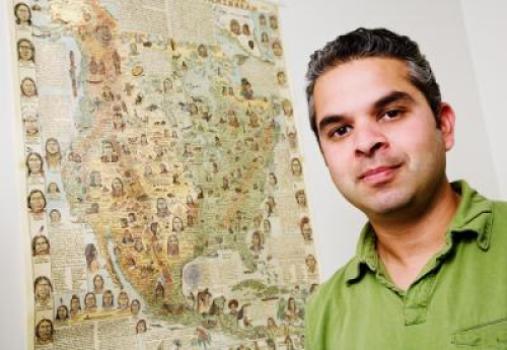By Scott Sutherland | Geekquinox – Thu, 4 Jul, 2013
Thanks to a team of researchers from Canada, the U.S. and China, First Nations groups living along the coast of British Columbia now have proof that they are the direct descendants of people who lived in the area up to 5,500 years ago or longer.

This research, led by University of Illinois anthropology professor Ripan S. Malhi, examined the mitochondrial DNA of people living in the area now and from Native American remains going back thousands of years.
[ Related: Carving of Roman god unearthed in ancient garbage dump ]
Mitochondrial DNA is different from the DNA that resides in the nuclei of our cells. Firstly, it’s far more abundant, so even though DNA decays over time, having more of it gives scientists a better chance at being able to piece together more of the information. Also, mitochondrial DNA is solely passed from mother to child in humans, and since it doesn’t ‘recombine‘ — meaning it doesn’t exchange genetic information with other DNA — it remains roughly the same throughout the generations. Thus, the scientists were still able to compare the DNA from remains to people living in the region now, and find matches between them.
According to the study, matching mitochondrial DNA sequences (also called ‘mitochondrial genome’ or ‘mitogenome’) were found in three participants — the remains of a young woman who lived 5,500 years ago on the Lucy Islands, the remains of another woman who lived on Dodge Island around 2,500 years ago, and a woman currently living in the area. This DNA evidence shows that the living woman is the direct descendant of either these other two women, or of their mothers.
Another mitogenome from Dodge Island remains, from 5,000 years ago, were found to match three other living participants from the area.
“Having a DNA link showing direct maternal ancestry dating back at least 5,000 years is huge as far as helping the Metlakatla prove that this territory was theirs over the millennia,” said Barbara Petzelt, an author and participant in the study, according to a University of Illinois news release. TheMetlakatla are just one of the First Nations groups in the area, that are part of the Tsimshian, Haidaand Nisga’a people.
Studies done in the past have looked at a small number of mitochondrial DNA sequences (apparently less than 2%), but this is only the second study that looked at all mitogenomic sequences (the first was of an Inuit man who lived in Greenland between 3,400 to 4,500 years ago).
As Malhi points out, the introduction of European DNA — from European men producing children with Native American women — complicates DNA studies of the Native American population, but examining the mitochondrial DNA makes it much easier to see the purely Native American lineages.
“This is the beginning of the golden era for ancient DNA research because we can do so much now that we couldn’t do a few years ago because of advances in sequencing technologies,” Malhi said in the statement. “We’re just starting to get an idea of the mitogenomic diversity in the Americas, in the living individuals as well as the ancient individuals.”
[ More Geekquinox: New crime scene technology can find hidden fingerprints ]
One aspect of the study that helped with the DNA evidence was the rich oral history kept by these B.C. First Nation tribes, which trace family lineages back through the mother. So these histories could be directly compared to the results from the mitochondrial DNA.
“It’s very exciting to be able to have scientific proof that corroborates what our ancestors have been telling us for generations,” said Joycelynn Mitchell, a Metakatla co-author and participant in the study. “It’s very amazing how fast technology is moving to be able to prove this kind of link with our past.”
(Photo courtesy: L. Brian Stauffer/University of Illinois)
Geek out with the latest in science and weather.
Follow @ygeekquinox on Twitter!
